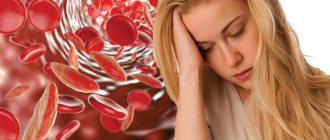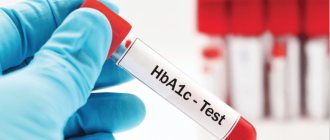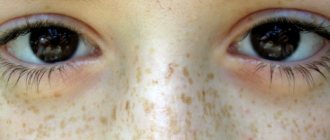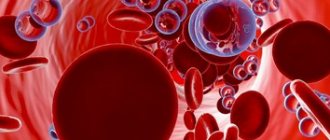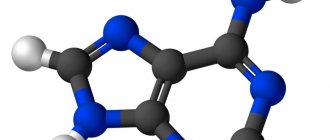Many people have heard about hemoglobin, but not everyone knows what it is and why its level in the body is so important. But it performs several vital functions. Together with the general practitioner of the European Medical Center Azamat Zhambeev
We tell you what hemoglobin is, what its level is considered normal and what to do if it is too low.
Who is guilty? 5 causes of headaches
Why does the body need hemoglobin?
This is a protein substance found in erythrocytes (red blood cells). It consists of two parts, reflected in its name - heme (the non-protein part) and the simple protein globin.
Hemoglobin provides oxygen transport. In the capillaries of the lungs, a maximum of four oxygen molecules bind to one oxygen molecule and form oxyhemoglobin. Then, in the blood stream, red blood cells deliver this ligament to organs and tissues. Here, the oxygen necessary for oxidative processes is freed from bonding with hemoglobin.
Photo: istockphoto.com
In addition, hemoglobin is capable of binding a small amount of carbon dioxide (carbon dioxide) in tissues and releasing it in the lungs, removing it from the body. This compound also performs a buffer function: it plays an important role in stabilizing the blood pH (pH). The normal pH value of blood lies between 7.35 and 7.40.
In letter and in spirit
If, during repeated blood tests, hemoglobin remains at the same level or continues to decrease, it is necessary to switch to iron supplements. For children, they are available in the form of dragees, capsules, syrups (there are also solutions for injections). For adults – in tablets and injections. There are monocomponent preparations - that is, those that contain only iron (they are usually prescribed to those who suffer from allergies) and combined ones, where iron is combined with various vitamins that promote its better absorption.
The doctor may prescribe injections in cases where the absorption of iron in the intestines is severely impaired (with inflammatory bowel diseases, severe diarrhea).
But in our country, as a rule, preference is given to tablets. Because, on the one hand, iron “in the injection” is absorbed worse, on the other (paradox!) – you can overdo it with its dosage. Which is also not good. Because iron, once it enters the body, is not removed from it itself, but lies in the so-called “depots”. Excess iron storage can trigger the development of diabetes, severe liver disease, heart disease, and even breast cancer.
What does low and high hemoglobin levels mean?
When the amount of hemoglobin decreases, a person develops anemia. The main reason for this is considered to be iron deficiency.
Photo: istockphoto.com
Anemia can also be associated with a deficiency of vitamin B12 or folic acid.
In addition, a decrease in hemoglobin levels can be caused by premature death of red blood cells and an increase in the rate of their destruction. This condition is observed in some immune disorders, long-term infectious diseases, as a result of exposure to drugs and chemicals of oxidative action, poisons, burns and frostbite, infectious factors, etc.
Finger on the pulse: what should be the heart rate at different ages
An increase in hemoglobin above normal may indicate dehydration or a high number of red blood cells. Increased hemoglobin is observed in congenital and acquired heart defects, lung diseases, and some cancers. Also, the level may be higher than normal after physical exercise and in general among residents of high mountains, which is associated with a compensation reaction: high mountain air is poor in oxygen, and in this way the body increases its content in the blood.
Both adults and children
With iron deficiency anemia, the balance is disturbed: the loss of iron in the body exceeds its absorption. This happens in children during periods of rapid growth (in the second year of life and adolescence) or due to infection with worms. Anemia is a frequent companion of pregnant and lactating women, whose iron needs increase sharply - after all, they have to “share” it with the child.
But the most common cause of iron deficiency in adults is frequently recurring small bleeding (from 5-10 ml per day). They can be caused by a variety of diseases: from bleeding ulcers and hemorrhoids to stomach cancer. In women, the main cause of iron deficiency is uterine bleeding (caused by endometriosis or other gynecological diseases) and heavy menstruation; in men, bleeding from the gastrointestinal tract.
Often we rob ourselves: fasting days, independent diets are a very short path to iron deficiency.
What level of hemoglobin is considered normal?
For an adult man, the hemoglobin norm is 130-160 g/l of blood, for an adult woman - 120-140 g/l.
Photo: istockphoto.com
For children, the following values are considered normal:
- newborns up to two weeks of life - not lower than 150 g/l;
- children from two to four weeks of life - 120 g/l and above;
- children aged six to 59 months - 110-140 g/l;
- children aged from five to 11 years - 115-140 g/l;
- children aged 12 to 14 years - 120-150 g/l;
- children over 15 years old - 130-160 g/l.
Prevention of anemia
To prevent the development of anemia, it is necessary:
- avoid contact with poisons and toxic substances;
- refuse to visit areas contaminated with radiation;
- do not contact with sources of ionizing radiation;
- do not take medications uncontrollably;
- to harden;
- eat right, include meat, greens, fruits and vegetables in your daily diet;
- spend more time outdoors.
Secondary prevention of low hemoglobin includes:
- blood test once a year;
- seeking qualified medical help in the event of acute infectious and viral diseases;
- annual medical examinations;
- pregnancy planning (for women).
This article is posted for educational purposes only and does not constitute scientific material or professional medical advice.
When should you increase your hemoglobin level?
If your hemoglobin level drops below the specified standards, you should consult a doctor. It is corrected taking into account the cause of anemia. An important goal of treatment is to eliminate the underlying disease. Therefore, when determining low hemoglobin in the blood, it is necessary to undergo a number of examinations.
Maximum from nature: why add greens to your diet?
Interesting
If you smoke a lot, you may have anemia, even though a blood test shows normal hemoglobin levels. This happens because the carbon monoxide contained in cigarettes combines with hemoglobin and forms its special form. Such hemoglobin is not able to carry oxygen. And to make up for its deficiency, the body increases the production of hemoglobin, its level is high, but this is of little use. Therefore, abroad, for example, the hemoglobin level of smokers is calculated depending on the number of cigarettes smoked per day.
How to increase hemoglobin levels?
The method of treating anemia depends on its degree and the cause of its occurrence. In most cases of iron deficiency anemia, doctors prescribe iron supplements and give dietary recommendations. Treatment of B12 deficiency anemia is based on replenishing the deficiency with vitamin B12 supplements. In almost all cases, this allows you to get a positive effect.
Foods high in iron include shellfish, organ meats, red meat, spinach, legumes, pumpkin seeds, quinoa, broccoli, tofu, and dark chocolate. For B12 deficiency anemia, it is necessary to include foods rich in this vitamin: beef, also offal, eggs, milk, cheese, green leafy vegetables. Dishes high in ascorbic acid can be used as an aid: red pepper, black currants, rose hips, citrus fruits. It is recommended to drink vitamin tea from berries if there are no allergies or other contraindications.
Photo: istockphoto.com
It is difficult to create the right diet on your own. This should be done by a specialist, taking into account the amount of iron that the patient needs based on his hemoglobin level. This is especially important for children and pregnant women.
You should not try to increase your hemoglobin level on your own without finding out the cause of anemia; you should consult a doctor in a timely manner.
Iron is different from iron
It is believed that the best way to increase hemoglobin levels is to eat more foods containing iron. Old folk recipes advise: cook liver dishes, eat carrots, beets, walnuts, apples, drink pomegranate juice, and you will quickly increase hemoglobin.
Actually this is not true. Because iron is different. Indeed, many fruits and vegetables and legumes contain a lot of iron, but it is poorly absorbed. As well as from the liver, where iron compounds are presented in the form of complex proteins that are not easy for the body to “take away”. The so-called heme iron, found only in meat and poultry, is best absorbed.
But in order for it to be absorbed, it is also important what the meat is eaten with. For example, if you serve pasta or porridge as a side dish, much less iron will be absorbed: cereals contain phytates that bind it. An excellent partner for meat dishes are vegetable side dishes made from zucchini, broccoli, onions, and herbs (they contain substances that stimulate hematopoiesis). It makes it difficult to absorb iron and calcium, so dairy and meat products are not compatible.
Fats inhibit hematopoiesis, so fatty meats and fish, and especially lard, are excluded. But butter and any vegetable oil - sunflower, olive, corn, pumpkin, etc. - should definitely be on your table. Do not drink tea immediately after meals - tannin binds iron, preventing it from being absorbed. And don’t get too carried away with coffee - this drink “washes” iron from the body.
Vitamins, especially C, help the absorption of iron. It is useful to drink orange and tomato juices every day. And eat more fruits and vegetables: the best suppliers of ascorbic acid are black currants, citrus fruits, kiwi, and bell peppers. In winter, when the vitamin C content in fresh fruits and vegetables drops sharply, sauerkraut and rosehip infusion perfectly replenish it.
Reasons for decreased hemoglobin
Hemoglobin appears in the blood thanks to a balanced diet rich in iron. First of all, the attending physician must find out which diet predominates in the patient. If the patient eats meals that exclude meat, animal proteins and legumes, the first step is to restore a varied diet.
If the patient is eating a fairly healthy and nutrient-dense diet but still has low hemoglobin, a number of other tests should be performed.
If we are talking about a female patient of reproductive age, then first of all it is necessary to conduct an ultrasound examination of the pelvic organs to detect pathologies that cause heavy bleeding. In addition, it is important to understand how much a woman experiences monthly blood loss associated with the menstrual cycle. Often they become the physiological cause of decreases in hemoglobin. In this case, the gynecologist should suspect the presence of fibroids, which forces the walls of the uterus to contract intensively, causing increased blood loss.
If we are talking about a male patient or examination of the female reproductive system did not produce results, the next stage of examination should be gastroscopy and colonoscopy. These diagnostic methods will help identify internal bleeding that is not so heavy as to become noticeable, but its regularity causes a significant amount of blood lost.
The third, no less important reason why hemoglobin may decrease is leukemia. This disease is associated with a gene mutation and causes disturbances in the functioning of the hematopoietic system.
What are the consequences if low hemoglobin is not treated?
Oxygen delivered by hemoglobin ensures the normal functioning of all organs. If it is not enough, then functional and organic changes begin, resulting in a life-threatening condition. The degree of damage depends on the duration of oxygen starvation, and the consequences lead to the formation of a number of pathologies:
- painful changes in the liver;
- development of shortness of breath;
- the appearance of pathological changes in the vascular and cardiac systems;
- disruptions in the functioning of the nervous structure;
- changes in the composition of the blood, a decrease in red blood cells - anemia;
- development of atherosclerosis;
- exacerbation of chronic diseases.
A slight decrease in hemoglobin relative to the norm is associated with weakness and increased fatigue. As the gap in indicators increases, a depressive state and irritability appear.
Note! A large lack of hemoglobin in pregnant women is fraught with premature birth and the development of hypoxia in the unborn child.
EL Clinic: methods of treating low hemoglobin
To prescribe effective treatment, it is necessary to establish the cause of the disease. Treatment methods depend on the duration of the disease, severity, and characteristics of the body. In general, all activities can be grouped into separate points:
- making changes to your diet: diversify your menu with foods that contain iron. This approach will make it possible to improve the composition of the blood, increase the number of red blood cells, and increase the blood flow that delivers oxygen to the organs. Iron-supplying products can be chicken eggs, liver, meat (preferably beef), herbs, buckwheat, fruits, vegetables;
- Therapeutic treatment involves taking medications that replenish iron deficiency, which, in turn, improve hematopoiesis. For example, erythropoietin, totema, hemostimulin. They are taken orally and intravenously. The latter option is used in cases where the problem of low hemoglobin must be solved as quickly as possible;
- in case of loss of a large volume of blood, a transfusion is performed. Such manipulation restores quantity and renews quality;
- in combination, vitamins B, C, and minerals are prescribed, which correct the deficiency of missing elements. Folic acid increases and strengthens overall immunity. The method of administration is determined by the degree of deficiency: if the content is low, it is administered subcutaneously;
- lifestyle changes: giving up bad habits, quality sleep, feasible physical activity, adjusting the daily schedule.
The clinic's hematologists are professional in treating low hemoglobin. Blood tests monitor changes in the patient’s condition, the course of the disease, and blood composition. Treatment is carried out in a complex, individually, taking into account the presence of other diseases and the general condition of the body.
Normal hemoglobin level in blood during pregnancy
During pregnancy, a woman’s amount of enzyme in her blood will differ from the values indicated in the table above. Also, pregnant women should know what medications can and cannot be taken during pregnancy. These deviations are associated with various changes that occur in the body.
Approximate indicators of enzyme content in pregnant women are shown in the table:
| Trimester | Amount of hemoglobin g/l. |
| 1 | 115 — 165 |
| 2 | 110 — 145 |
| 3 | 110 — 140 |
These differences are associated with the end of menstruation and the subsequent growth of the placenta, which requires constant nutrition. Therefore, it is important for the expectant mother to systematically undergo blood tests, since a critical decrease/increase in hemoglobin can become a source of dangerous complications (hypoxia, abnormal fetal development, early birth, underweight of the baby, retardation in mental/physical development, etc.).
Doctor's advice
Often the cause of increased hemoglobin is non-compliance with the drinking regime. The body receives little fluid (less than 1.5-2 liters of clean water per day, tea, coffee and other liquids do not count), this causes the blood to thicken. In this condition, not only hemoglobin, but other indicators also increase - hematocrit, red blood cells, platelets. Hematologists advise that if you have anemia, your diet should focus on meat. Liver and buckwheat are in second place in importance. Next are apples, nuts, cocoa. These same principles apply not only to adults, but also to children.
Victoria Druzhikina Neurologist, Therapist


